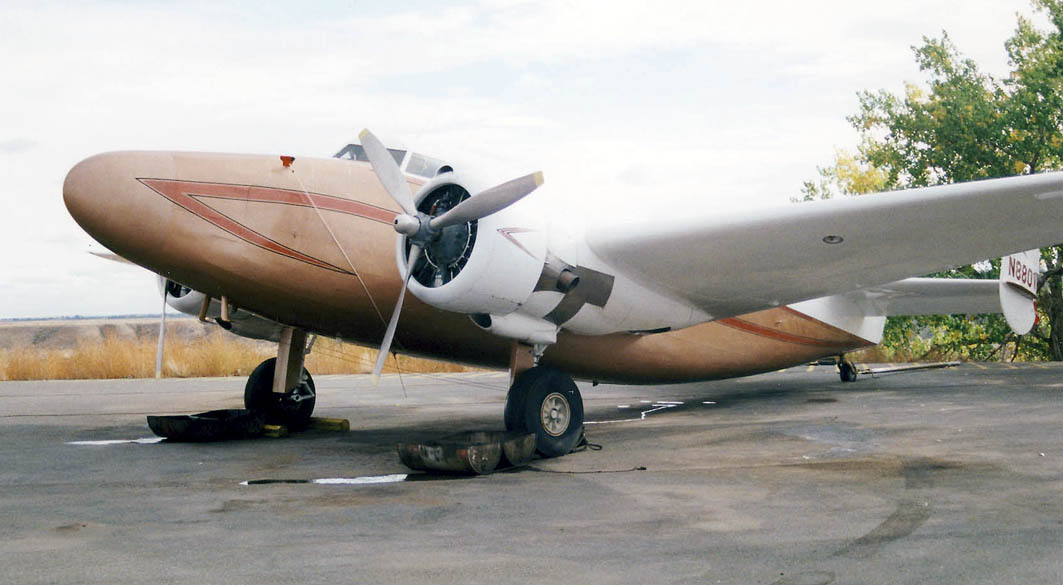
Lockheed L18 Lodestar
 |
| Lodestar N880V ended its days as an executive aircraft and was preserved at Greybull, Wyoming, in the USA. |
Lockheed began to develop a larger and updated version of the Model 14 Super Electra in 1939 after the earlier design did not prove a commercial success. The company modified the fourth Super Electra by adding two more rows of seats in a fuselage stretched by 5ft 6in to 49ft 10in. The first of three altered aircraft flew on September 21, 1939, with the first true Model 18 following on February 2, 1940. The first deliveries were made to Mid-Continent Airlines in March 1940 and the type was subsequently built in numerous sub-types for customers across the USA and the rest of the world. However, the bulk of production was for the USAAF and US Navy as staff transports, troop or paratroop aircraft. Several were supplied to the RAF and Commonwealth air forces under lend-lease. Production ceased with the last delivery to the USAAF in January 1944, by which time 625 had been built, including the first three modified 14s. A stretched version was produced by Kawasaki in Japan as the Ki-56, with 121 of the type serving from 1942 to the surrender in 1945. The type found ready acceptance as a business aircraft after the Second World War and there were several developments by private companies. William P Lear's Lodestar was the first in 1953. It added speed, range and economy and differed outwardly with a new streamlined windscreen and flush cabin windows. The engine nacelles and wings were also modified, the latter with squared-off tips. A total of 43 were converted, with several then further updated by Howard Aero as the Howard 250, the only other conversion to prove popular with about 22 conversions. Other types included the Wiplinger Aircraft Lodestar (six aircraft), DallAero Lodestar (four, with a further four partly modified), Gulfstar (five) and the tricycle undercarriaged BACC H-250 Tri-Gear (five). The type flies on with several historic groups and private owners in the USA, while several others are preserved or derelict around the world. |
| Contents | Photos | Census | Update |